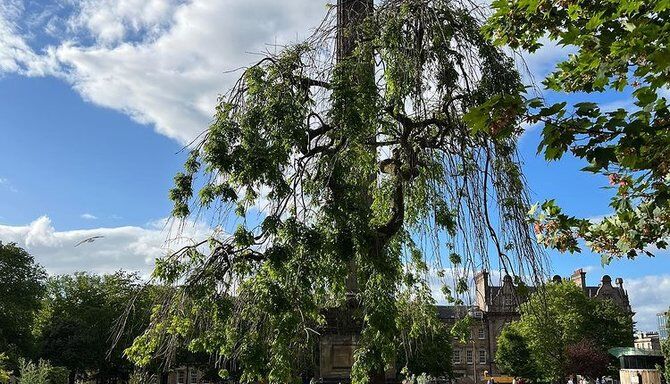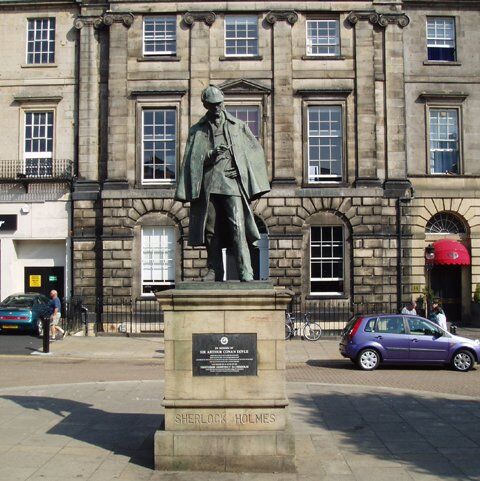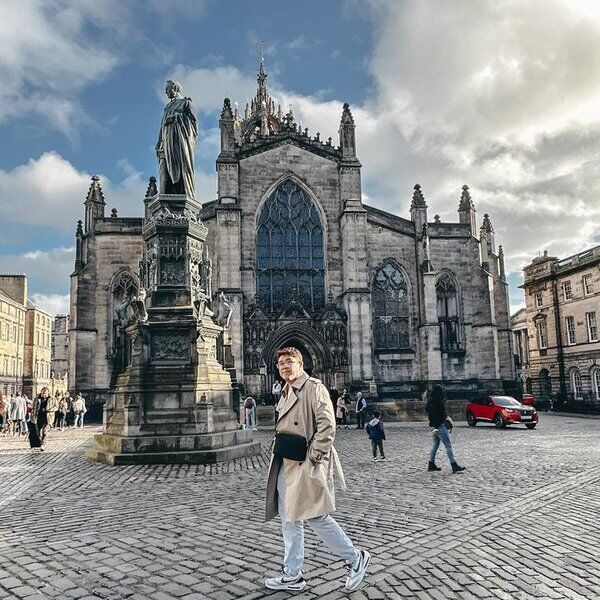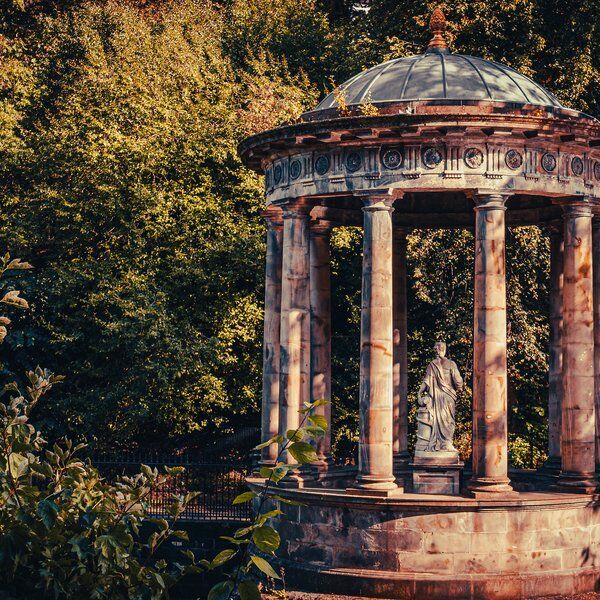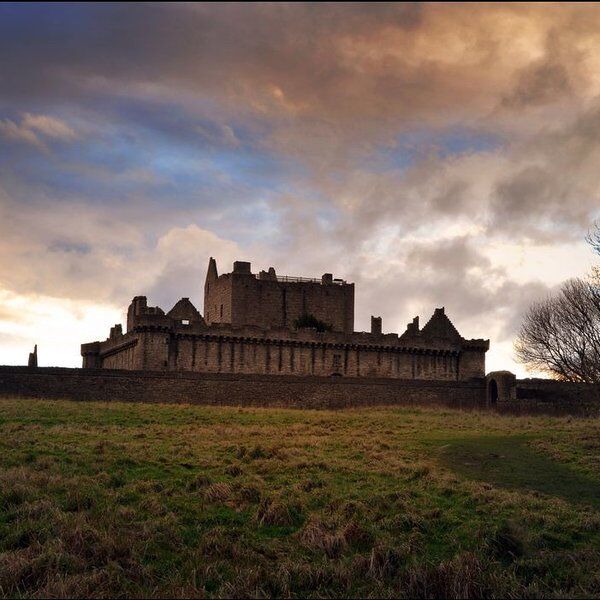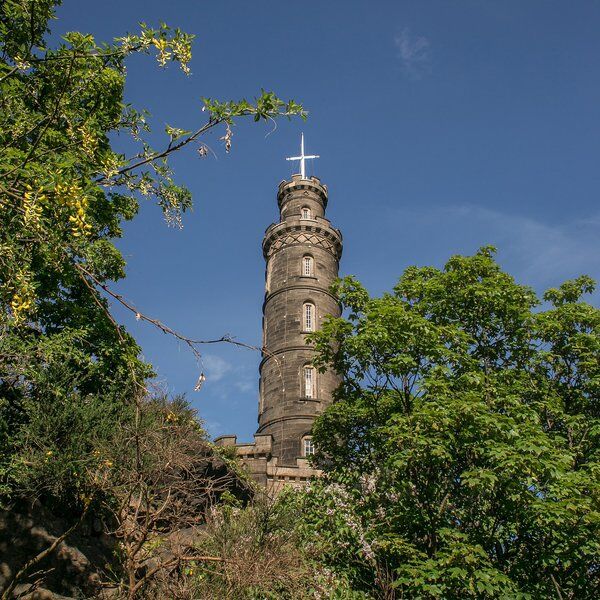What is St Andrew’s Square?
St Andrew’s Square was developed in the 1770s as part of James Craig’s Edinburgh New Town. Its primary purpose was to flank East George’s Street with a bit of much needed greenery. Upon its completion, it became the hub of Edinburgh’s financial world and one of the most prestigious and desirable residential areas in New Town.
St Andrew Square was one of the first parts of the New Town to be completed, and in the 1780s it was one of the most fashionable addresses in the city.
The Gardens of St Andrew’s Square were originally only accessible to the residents of the surrounding apartments and businesses. In 2008, they were opened to the public for the first time following a £2.6 million investment in the Square by the City. With this money the area has been transformed into a tranquil haven for everyone to enjoy.
Today, as part of New Town Gardens, St Andrew’s Square Gardens are managed by Essential Edinburgh. The area has become known for its pubs, hotels, restaurants, and designer shops.

Famous Residents of St Andrew’s Square
In its early life many famous residents were associated with St Andrew’s Square. Amongst these were Lord Henry Brougham, whose family was one of the first to reside in the Square; and historian and philosopher David Hume.
Hume was persuaded to live in the area by his architect friend, Robert Adam. Adam hoped that the recruitment of such a powerful person would encourage others to migrate to the New Town. Hume entertained many prestigious guests over the years, including American Founding Father Benjamin Franklin.
Features of St Andrew’s Square
St Andrew’s Square may be named after the patron saint of Scotland, but its most dominant feature, the Melville Monument, has little to do with religion. In fact it was dedicated to the UK’s first Secretary of State for War, Henry Dundas, who was also the first Viscount Melville.
Dundas was a man of immeasurable influence in Scotland in the latter half of the 18th century. So much so that he was often referred to as the ‘uncrowned king of Scotland’. He was also the last member of British Parliament to be impeached for misappropriation of public money. Some even suggest these ‘misappropriated’ finances were used to construct the £8,000 Melville Monument itself!
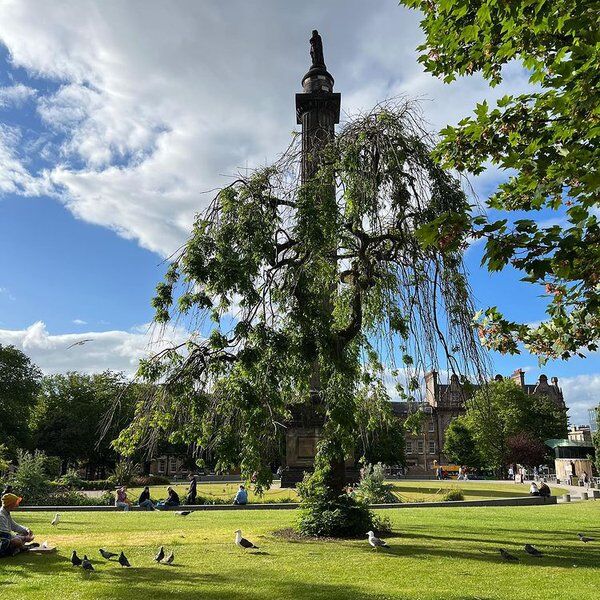
On the East side of the Square lies the Dundas’ House, built by Sir William Chambers (another famous St Andrew Square resident) for Sir Lawrence Dundas between 1772 and 1774. In 1825, this impressive mansion became the head office of the Royal Bank of Scotland. The land it was on was originally intended for St Andrew's Church, however.
Picturing St Andrew’s Square as a mirror to George’s Square (Charlotte Square), architect James Craig envisioned St. Andrew's Church sitting across the length of George Street, looking out at its twin, St George's Church. But after businessman Sir Lawrence Dundas bought the land, the Church had to be erected a short distance away down George’s Street.
After the recent refurbishment of St Andrew’s Square Gardens there exist two new gated entrances in the South-Western and North-Eastern corners. Curving footpaths link the new entrances and a reflection pool has been added to the South-Westerly region of the Garden. There is also mood lighting, and a small café . The Melville monument has also undergone repairs to ensure its preservation and longevity.
Our thoughts…
During the First World War, the garden was used to house American soldiers on leave and also contained air-raid shelters during the Second World War.
St Andrew’ Square has, since its creation, played a significant role in shaping the landscape and the economic dynamics of New Town, Edinburgh. It was once the most desirable address in the city; serving as a hub for Enlightenment thinkers and other high-society socialites, and even playing its part in two world wars.
Now a trendy modern thoroughfare, it hosts art exhibitions and outdoor cinema showings, attracting 4 million visitors a year. St Andrew’s Square has truly made its move into the modern world.
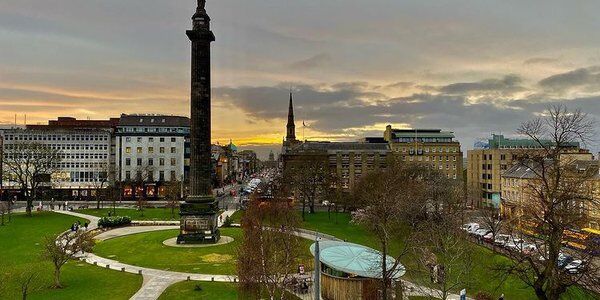
Interested in finding more places like this? Why not try one of our Treasure Hunts in Edinburgh - untangle cryptic clues as a team, as you are taken on a journey to the most unique, unusual and bizarre corners of Edinburgh!
